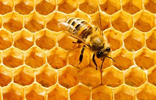Write4U
Valued Senior Member
I never claimed it knows mathematics! Why do you persist in misrepresenting my posts.An atom is a physical object. It doesn't need to "know" how many protons it has. It is literally made of protons (among other things). It certainly doesn't need to "know" any mathematics.
It is the number of protons in an atom that determines its kind.
Atomic number, atomic mass, and relative atomic mass
Atoms of each element contain a characteristic number of protons. In fact, the number of protons determines what atom we are looking at (e.g., all atoms with six protons are carbon atoms); the number of protons in an atom is called the atomic number. In contrast, the number of neutrons for a given element can vary. Forms of the same atom that differ only in their number of neutrons are called isotopes.
Together, the number of protons and the number of neutrons determine an element’s mass number: mass number = protons + neutrons. If you want to calculate how many neutrons an atom has, you can simply subtract the number of protons, or atomic number, from the mass number.
Khan Academy
and
Atom

Atom - Wikipedia
IOW, it is the mathematical pattern (number of protons) that identifies the kind of atom. Humans have nothing to do with that. We just codified it.
Yes, but distances exist without human interpretation. The natural mathematical values of speed and distances are described in Special Relativity.It is defined via universal constants which are defined according to parameters set by scientists.
All that humans do is codify these deterministic interaction of values via mathematical processes. The proof lies in the axiom itself.
I am, you just wont accept it. Again, I am not arguing against physics. Mathematics is not the enemy of physics. It is the explanation of physics.Address the core issue, if you can.
Ever watched a chameleon measure distance to an insect...
It uses triangulation, just as a basketball player does to gauge distance to the hoop. Neither know they are using triangulation at that time.No. Have you? What kind of ruler did it use?
They just do.
How do chameleons use their long, sticky tongues to catch small insects?
The process of catching prey with their tongues is a highly coordinated and precisely timed movement for chameleons. When a chameleon spots a potential meal, it will focus its eyes on the target and calculate the exact distance. Then, it will extend its tongue towards the prey, ensuring that the sticky tip comes into contact with the insect.
The speed at which the chameleon extends its tongue is truly astonishing. They are capable of shooting their tongues out at a rate of 13-16 feet per second. This extraordinary speed, combined with their accurate aim, allows chameleons to quickly and efficiently catch their prey.
Camouflage And Tongue: How Chameleons Hunt And Capture Small Insects | PetShun
Learn how chameleons use their camouflage and specialized tongues to effectively hunt and capture small insects in this insightful guide.
 petshun.com
petshun.com
Write4U said:
or watched a spider weave its web, or bees constructing honeycombs?
I believe it is called a hexagonal (6 sided) pattern. Bees don't know they use it, but it is obvious that they do use the pattern to construct their honeycombs..Where's the maths?

And here we get to the heart of the matter.How is that possible?
There seems to be a new aspect to the function of time in the evolution of universal functional properties.
Is there a second arrow of time? New research says yes
“We could be wrong. But if we are right, it’s profoundly important.” Leading mineralogist Dr. Robert Hazen on the missing law of nature that could explain why life emerges.
Consider a coffee cup: it works best when holding your coffee, but it could also work as a paperweight, and it would not work well at all as a screwdriver. Hazen explains that it appears the universe uses a similar way of evolving not only biology, but other complex systems throughout the cosmos.
This idea suggests that while as the universe ages and expands, it is becoming more organized and functional, nearly opposite to theories surrounding increasing cosmological disorder. Hazen suggests that these two “arrows” – one of entropy and one of organized information – could very well run parallel to one another. If true, this theory could be groundbreaking in the way we perceive time, evolution, and the very fabric of reality.

Is there a second arrow of time? New research says yes
“We could be wrong. But if we are right, it’s profoundly important.” Leading mineralogist Dr. Robert Hazen on the missing law of nature that could explain why life emerges.
To me this means that Life itself is an evolved aspect of functional dynamics.
Note: "one of (physical) entropy and one of organized (mathematical) information". I like that duality.
Last edited:

